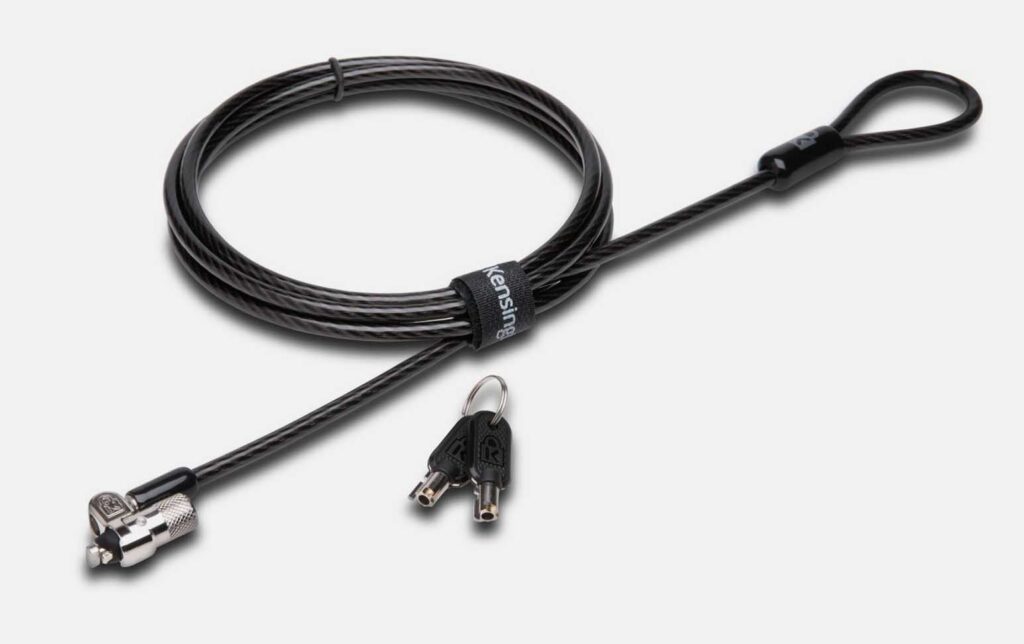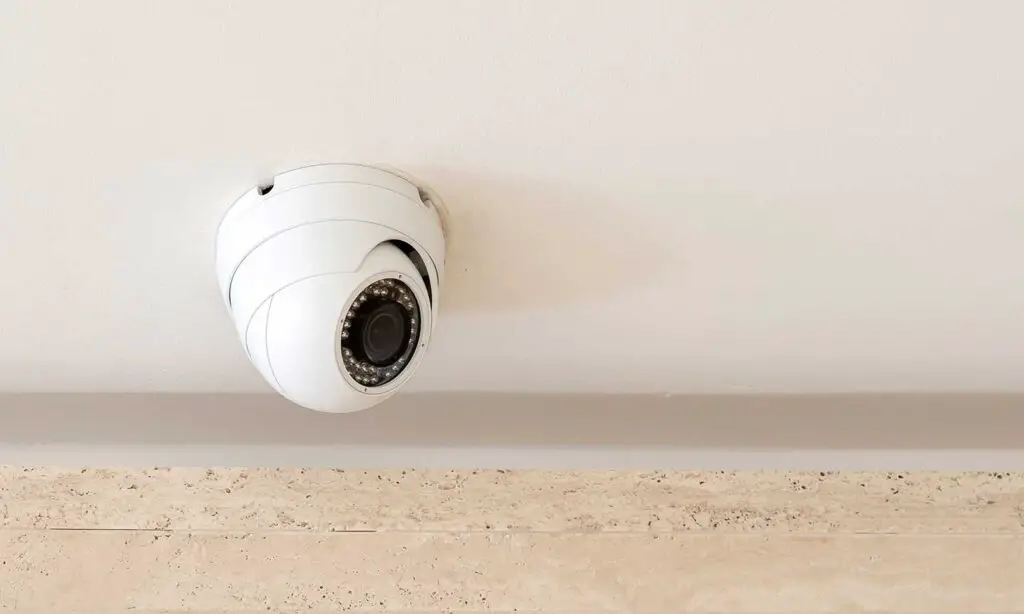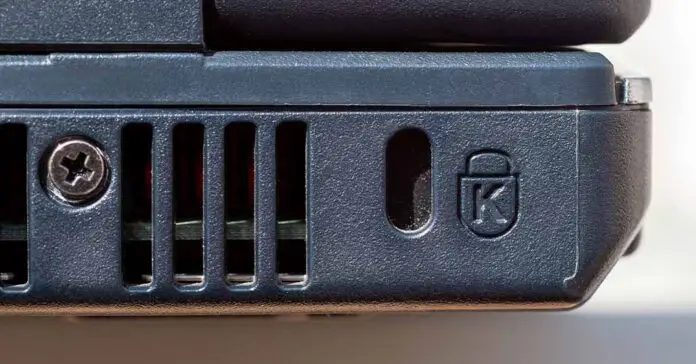You might have noticed a small hole with a padlock symbol and the letter “K” somewhere on your computer or laptop. This, is an infamous Kensington Lock, and its actual use cases are simpler than you think!
Explore the general purpose and security of Kensington Locks – should you even bother using a Kensington Lock if it’s present on your electronic device? Let’s take a closer look at the matter.
This web portal is reader-supported, and is a part of the Amazon Services LLC Associates Program and the eBay Partner Network. When you buy using links on our site, we may earn an affiliate commission!
What Are the Kensington Locks and what purpose do they serve?
Kensington Locks are small cable slots that let you attach a reinforced metal wire or cable to an electronic device (most commonly a laptop), which is then fixed to an object that’s harder to move than the device itself (such as a wall or a piece of heavy furniture). They are meant to prevent people without a physical key or a code for the lock placed on the wire from displacing or stealing your computer when you’re away, or at least they make it much harder than it would be without using any lock at all.
In essence, Kensington Locks work and act pretty much as traditional chain locks for bikes – the basic principle is exactly the same.
K-locks as they are often called, make use of a proprietary Kensington wire mount standard that allows for simple and fast connection of a security cable to the device, and for securing it in place using a supplied key or a combination lock.
So, in summary, the whole Kensington Lock system – the hole on your electronic device and the metal wire that you need to supply, make for a very basic anti-theft / anti-displacement measure for devices that are easy to move and left unsupervised for longer periods of time.
These kind of locks are often used either at retail outlets to prevent theft, or in corporate office areas, where you’re oftentimes expected to make use of the Kensington Lock on your laptop to prevent possible 3rd party malicious actors from removing your device from your workspace while you’re away.
How do Kensington Locks work? – Explained

A Kensington Lock system will consist of two basic elements: the mount slot on your electronic device, and the reinforced metal wire that’s meant to connect your device to a heavyweight object.
The mount (or the “hole”) designated for connecting Kensington wires will most of the time be marked by either a padlock symbol with a letter “K” somewhere near it, or a chain symbol with the very same letter in close vicinity. You can see an example photo of a Kensington Lock slot in the main image placed on top of this article. Remember that not all modern laptops and computers feature a Kensington slot, so it might just be that your particular device doesn’t have one. There is not much that can be done about it.
For newer (and usually thinner) devices, there is a new Kensington standard available: the Kensington Nano.
The wires for Kensington Locks are pretty simple – they feature a lock head on one end (a small key lock or a code combination lock), and a small hoop on the other (for fixing it to some kind of a structure or object that’s relatively hard to displace.
The metal cables themselves are often covered with extra rubber or steel wire coating to make it harder to cut them fast.
Nowadays these kind of reinforced K-slot attachment cables can be bought pretty much everywhere. One place where you can get them for cheap and fast is Amazon – here are some of the most popular ones recently.
How secure are Kensington Locks really?
The overall security of Kensington Locks is always up to debate. It depends on the environment where they are used, and the types of risks that may be associated with that very environment.
For example, in corporate contexts, a laptop which is fixed to a desk using a Kensington Lock might not be that bad of an idea. Your desk most likely won’t be left unattended for longer periods of time, and a potential thief, even if he somehow made it to your desk, won’t be able to quickly grab and take your device when this safety measure is implemented.
In public spaces where an electronic device is left for longer periods of time, K-locks are way less reliable. Provided a thief would have more than a few minutes alone with the device, he would have been able to easily cut the metal cable and possibly get away unnoticed.
Remember that in areas with high theft risk, these locks can prove themselves largely unreliable if the potential thief has enough time to work with while no one is around. The metal wires that the Kensington Locks utilize are rather hard to damage, but not at all impossible to cut when using appropriate tools.
Should you use a Kensington Lock on your device?

Whether or not you decide to use a Kensington Lock on your device is up to you if you have that possibility. If you value the little extra protection and peace of mind that it affords when you leave your device unattended for short periods of time, then it’s all good. However, it’s still important to remember that the K-lock wires can be relatively easily broken by tools such as bolt cutters or wire cutters, and won’t necessarily stop a determined thief with enough time on hands. Additional layers of security are always recommended to fully protect against theft, but you shouldn’t rely on the Kensington Lock alone to protect your device.
Keep in mind that some companies might enforce an in-house rule or policy of making use of the Kensington Lock every time you’re working on your laptop at your desk. This of course varies from place to place.
The bottom line is: time is of an essence for a thief, and if you want to make sure that the potential bad actor will at least have a little bit more trouble with stealing device and getting away, using a Kensington Lock can be beneficial.
Where can you get durable Kensington wires fast?
K-lock metal wires or cables are available in almost every tech-related store there is, despite their severe lack of popularity on the “regular” customer market. If you cannot find an appropriate wire in your local store, you can always do a quick search in a chosen online store.
As we’ve mentioned there are a lot of these to choose from over on Amazon. There are a lot of great options available there with fast 1-day delivery. Their price will usually be somewhere between 12-40 dollars depending on their quality.
Don’t get fooled though – more expensive Kensington lock wires can be harder to cut, but none of them are actually fully immune to a quality wire cutter tool. Kensington Locks are certainly a great additional security measure for your electronic devices, but be sure you use them while keeping their limitations in mind!

